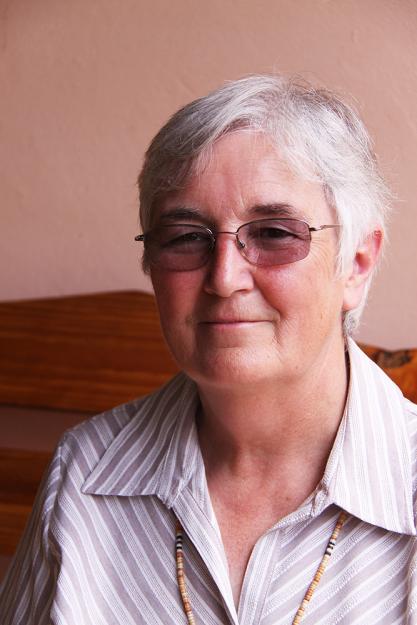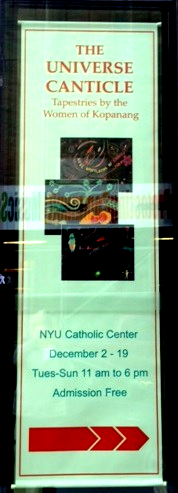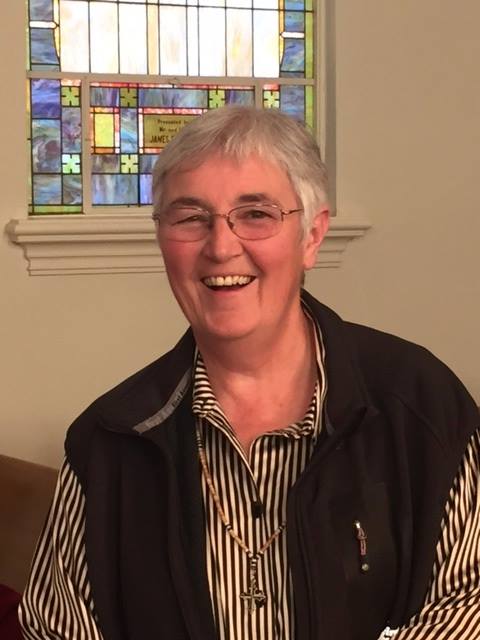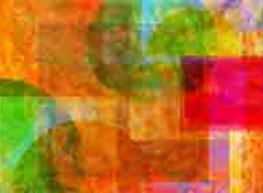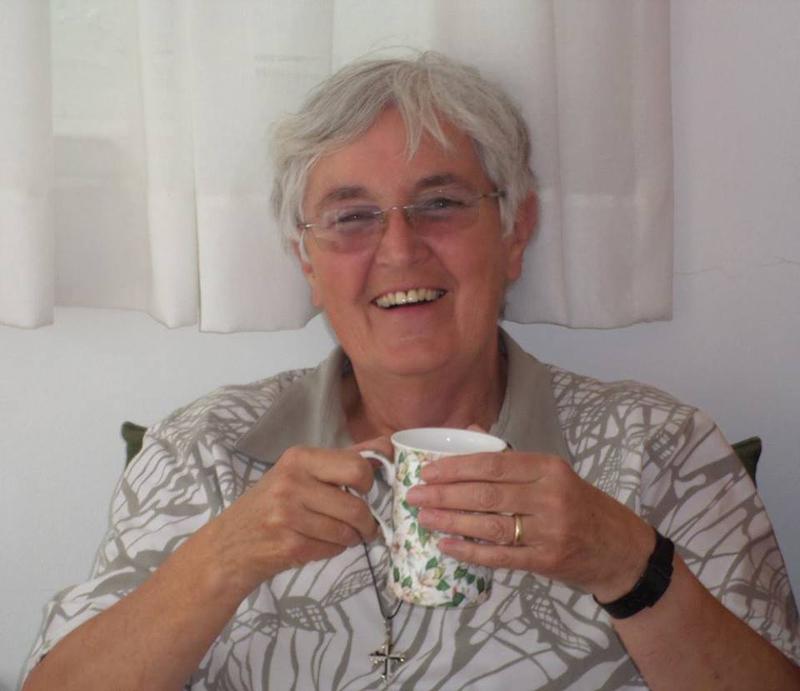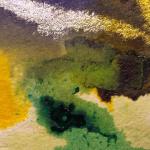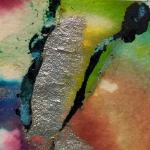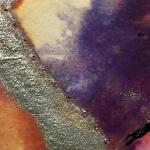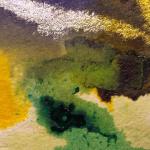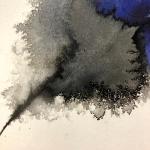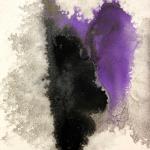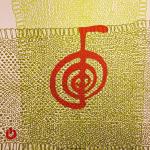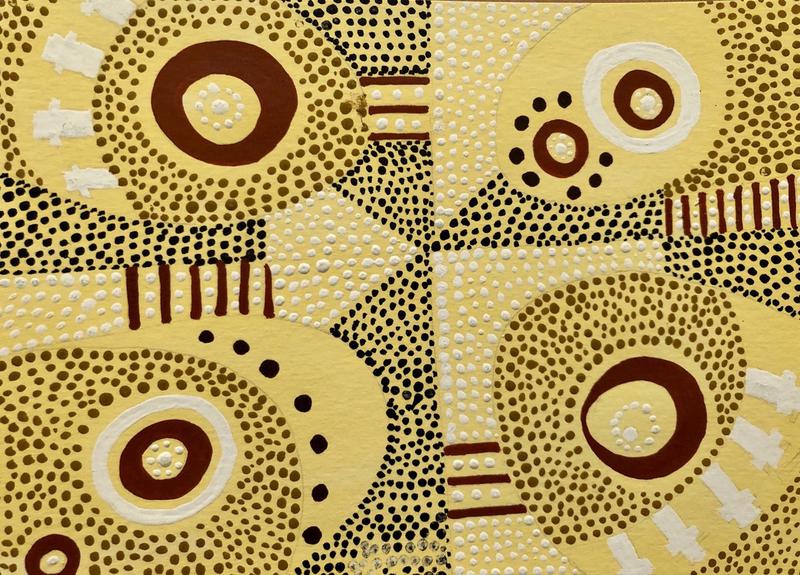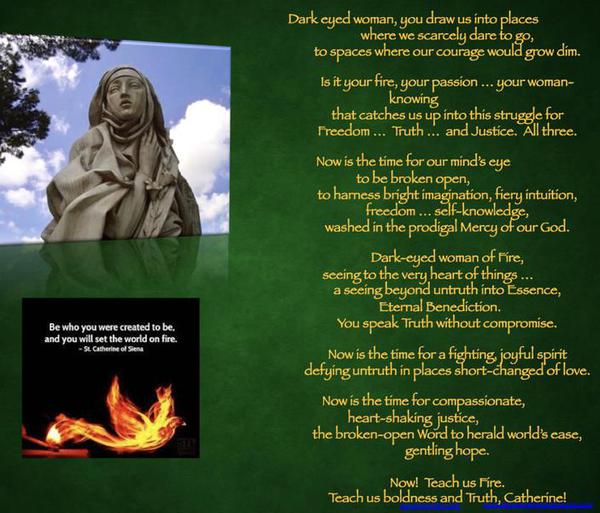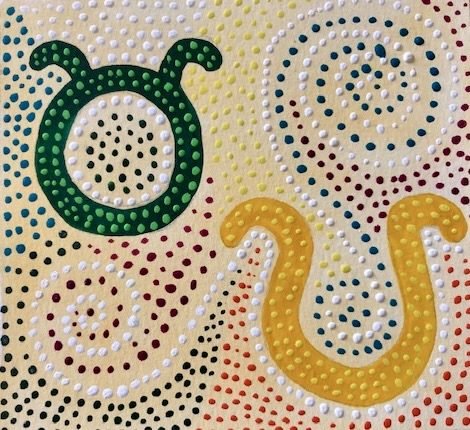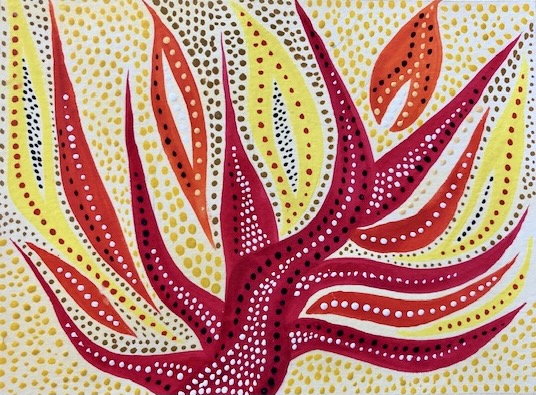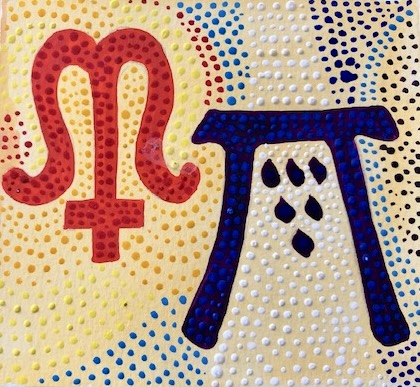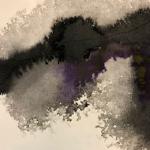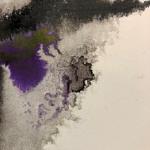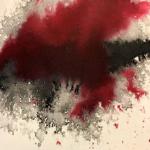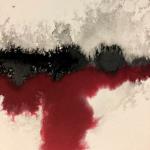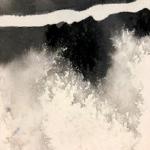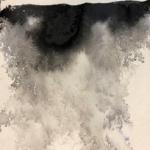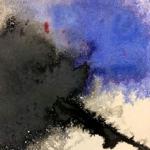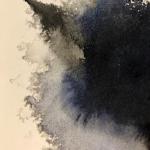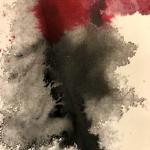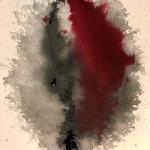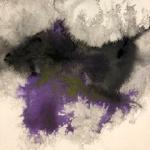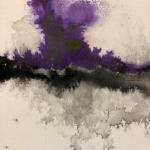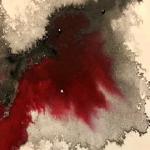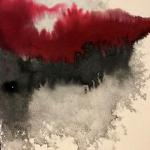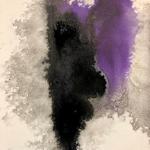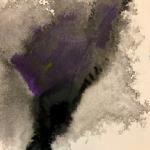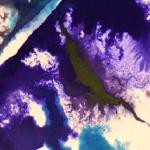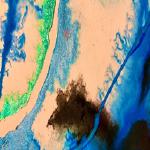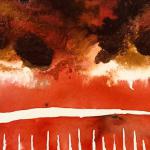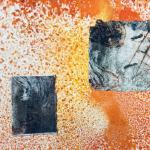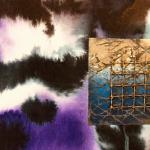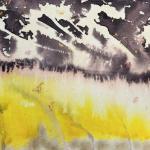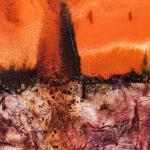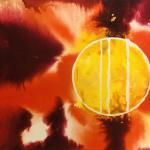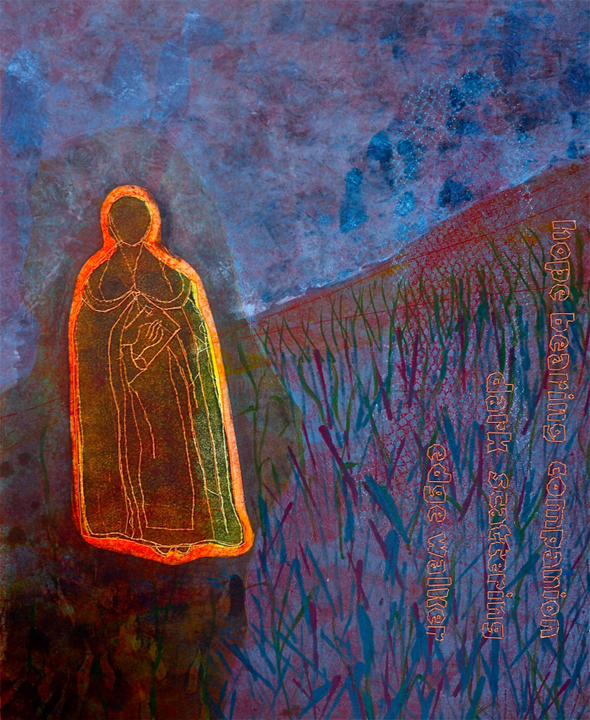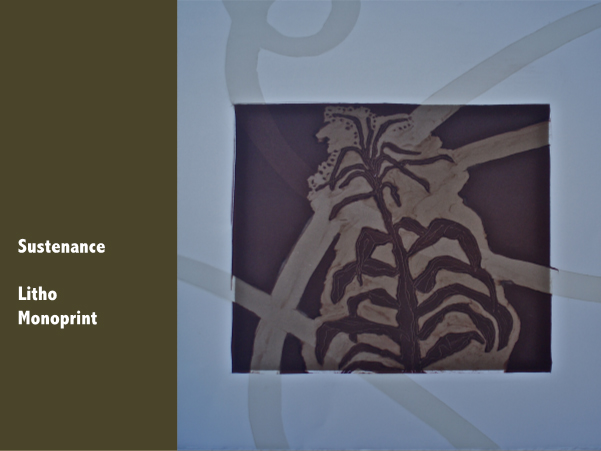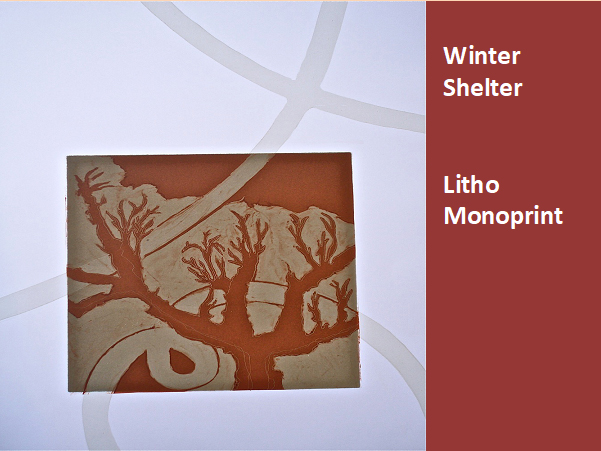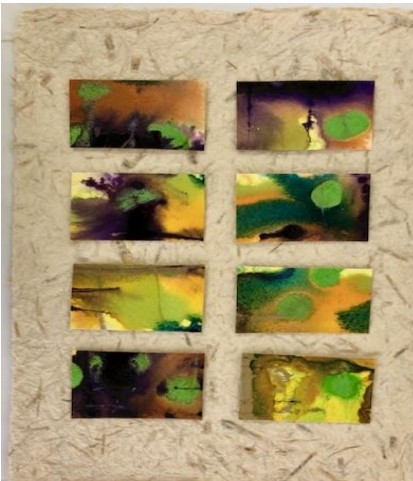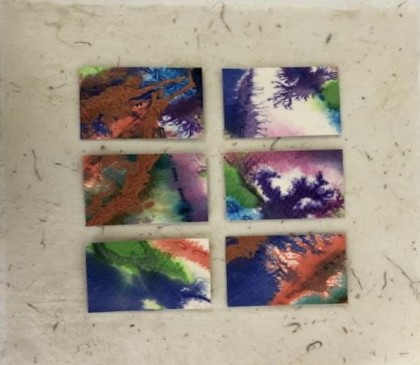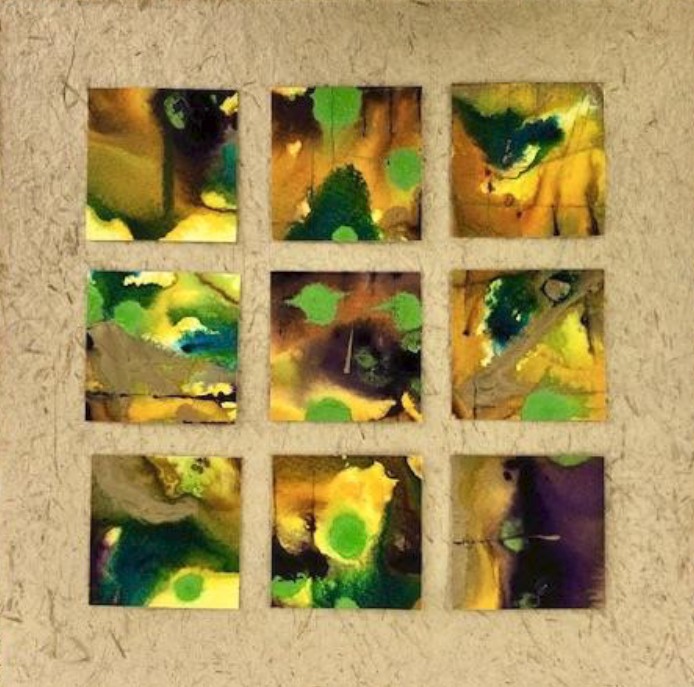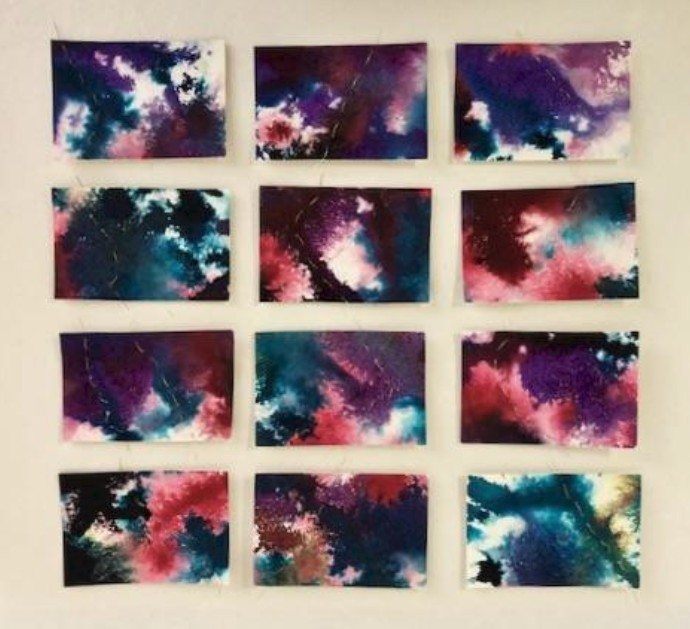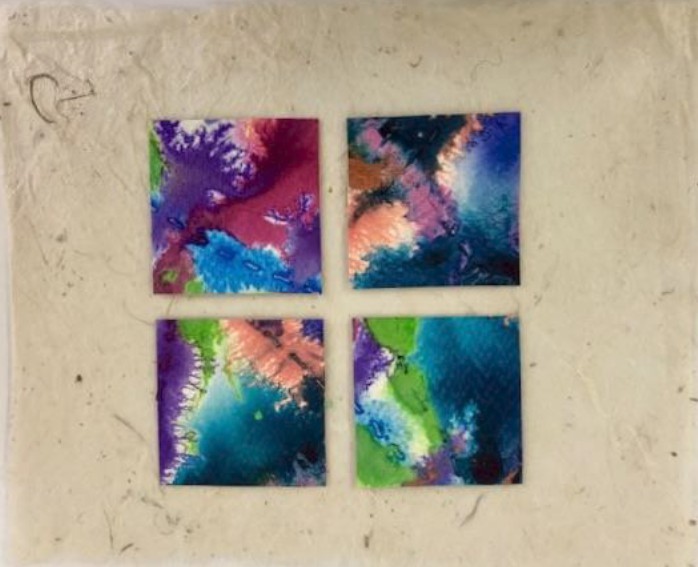Sheila Flynn OP
Sheila recently exhibited at the Gretchen International Print Exhibition in Switzerland as well as a participant in the GIF Book (31 South African artists contributing an edition of 101 prints) which has been purchased by the Smithsonian. Tsakane, South Africa
The print's title is 'Load-shedding'. I drew from a real snake skin, using it as a metaphor for transformation. We have to 'let go' to be transformed. The central symbol is an ancient symbol for power - we are empowered by grace when we open ourselves to God's work in us on behalf of others. The smaller symbol in the left hand corner is the 'on-off' button - the power to change and be transformed is in our hands, with grace.
When 13-year-old Sheila Flynn decided to attend a weekend youth camp on the fringes of the Epping forest in Essex, England, she and her friends expected a “wild weekend” of fun. Instead she was introduced to the philosophy of St.Dominic. “I was exposed to this man whose pursuit for truth and his incredible compassion just seared my heart,” said Flynn, who would join a community of Dominican sisters, “and I knew that was what I would become.”
It was a vision that eventually brought the Irish native to South Africa via the United States. And it was in South Africa that Flynn was permitted to fulfill a long-held ambition to study art and share her natural talent with people who needed tools to heal and lift themselves up.
Shelia realized that she wanted to help impoverished women when she offered a ride to two women standing on the roadside during a drive from Durban to Johannesburg. They refused, saying it was not her “kind” of lift they needed and she realized they were sex workers, plying their trade among the thousands of truck drivers who travel the 301-mile (500 km) route each day.
Having read reports of the high number of truckers who use prostitutes while working, she gently asked if they appreciated the risks they were exposing themselves to. She was deeply moved when asked in return if she knew what it is like to hear your child crying from hunger at night.
Overcome by the circumstances that dictate what a mother needs to do for her children, Flynn decided to find a way to use her skills to help women facing grinding poverty each day. She and a colleague, Sr. Mary Tuck, also a Dominican, started looking for an income-generating project for women. Their answer: Kopanang Community Trust, launched in 2001.
Kopanang, is a Sotho word for “gathering together” and the name of the hopeful center where women come together to create works of embroidery, and to share their stories, their problems, their courage and their solutions.
All of the Kopanang women are either living with HIV/AIDS or have close relatives who are HIV-positive or who have died from AIDS. Many also suffer abuse at the hands of their intimate partners. All live in deep poverty. “Here at Kopanang we grow spiritually and emotionally,” says 50-year-old Beauty Mabunda, who has been a member of the Kopanang community since 2006. “Before I didn’t believe in myself, but now I have the strength for whatever I come across [in my life].” Mabunda also participates in Dikaledi (Sotho for “long tears”), a support group for working through problems with a therapist.
See Full article with pictures:
DOMINICAN INSTITUTE
FOR THE ARTS
Sheila Flynn OP
Click on an image to scroll through larger views.
Thought you might like to see a plate (12 in all, this one being the 'Dominican Cross') from the stained glass window series I prepared for the Dadirri (Meditation) room at Santa Sabina College. The Cross is also my design - it is supposed to be in the Dadirri room but got taken to the Hall for assembly, hence it is not against the right background.
DADIRRI is a natural state of being and connectedness
The word, concept and spiritual practice that is dadirri (da-did-ee) is from the Ngan'gikurunggurr and Ngen'giwumirri languages of the Aboriginal peoples of the Daly River region (Northern Territory, Australia)
THE SANTA SABINA DADIRRI SPACE
A place of deep, inner listening
• The tyranny of time under which we live robs us of the deep inner silence we need to listen, to be still, to wait, just to be
The tyranny of time under which we live robs us of the deep inner silence we need to listen, to be still, to wait, just to be
• This space leads us into interconnectedness with creation, with self, with God, with each other
This space leads us into interconnectedness with creation, with self, with God, with each other
• Brings us to a quiet, still awareness, we let go so that God can be in us
Brings us to a quiet, still awareness, we let go so that God can be in us
o Being in the moment, not in the past, not in the future, but in the now
Being in the moment, not in the past, not in the future, but in the now
o Being fully aware of all that is around us and within us
Being fully aware of all that is around us and within us
o Deep gratefulness of what we have and are
Deep gratefulness of what we have and are
DESIGNS
I spent some time reflecting and researching Aboriginal art as a prelude and contemplative engagement to prepare myself to create some potential designs for the new Dadirri meditation space at Santa Sabina, because this sacred space is set on Warrigal/Durag land. I in no way lay any claim to appropriate Aboriginal designs (often akin to their Dreamtime/Songlines) but I found the dot technique a fitting parallel prayer within my own context. It takes time and focus. These are qualities one would wish to be embodied in a prayerful setting.
I was also deeply aware in studying Aboriginal art of the deep commitment to the natural forces of the earth, to cosmology, to the sensitivity of flora and fauna, animate and inimate life that the First Nation espouse. They have left an age-old (and continuing and emerging heritage) through signs and symbols, designs and sacred objects which embody the essence of their power and dependence on the earth for survival, sustenance and inspiration. We are all of a piece, forming part of the story and interconnectedness of salvation.
Our First Nation people, and our own Christian heritage call for us to recover a spirit of sacredness in our post-modern, consumerist times. What better way for me than to open my eyes and heart to this deep history. I am indebted to the First Nation peoples in this offering, however small my contribution.
spring/summer Spirit Fire Winter Autumn
Above: Grace Outpoured series
Dominic the Edgewalker
Outpoured
Season's Grace
THE KOPANANG UNIVERSE CANTICLE.
It took much more than some brightly coloured thread, the effort of a group of 17 women and a Dominican nun, to create the 31 individually embroidered panels on the subject of evolution that make up The Kopanang Universe Canticle .
The three month project itself became an evolutionary process for the Kopanang group. In the beginning, only one woman could thread a needle. Sister Sheila Flynn, previously a fine art lecturer at Wits Technikon/Johannesburg University, who held the position as she put it, of “holding the thread,” confessed to be only six stitches ahead.
The Kopanang Universe Canticle is not only a technical, creative and educational achievement but is one of original invention as in the process women invented several of their own stitches. At an even more profound level, “ Women found their souls in the embroidery . When they saw the final product they shed tears at the stories they were able to make” according to Flynn.
Although the Dominican order is one of preaching, there is an interesting connection between the arts through Henri Matisse. Matisse was so impressed by the care given to him by the Dominican sisters while in hospital, that he became involved in the interior decoration of the Chapelle du Saint Marie du Rosaire in Vence, France.
The Kopanang Universe Canticle panels depict the various stages of evolution in
bursts of celebratory colour, and the shimmer and glitter of tiny light catching beads and thread on a black fabric background. Flynn describes them as a “communion of science and faith”. For many, science and faith make uneasy bedfellows and yet the Jesuit priest Teilhard de Chardin abandoned traditional interpretations of creation for a less strict interpretation and said that “neither can develop normally without the other”.
Flynn provided the basic design and the women were given total control as to how they interpreted it. Different women chose different things. Ntombi was very clear in wanting to do the flowers but a gap opened at the emergence of bacteria reflecting the women’s truncated education which needed to be filled. An undulating ribbon of text runs through each panel providing information and serves as an interconnecting device between each panel.
The name of the group Kopanang means bringing together in Sotho. It came into being 10 years ago as a result of the impact HIV/AIDs had on two diverse neighbourhoods, the Tsakane and Geluksdal in south- east Johannesburg and a need for a sustainable income.
The Faithful Fools Street Ministry, founded by a Francisan Sister and a Unitarian minister to serve the poor and homeless, commissioned the panel for World Aids Day seven years ago. The 32.5 metre long piece (+100 feet) was to be placed in a corridor broken by doors hence the differing sized panels . On seeing the final product, the sponsors were so impressed they felt it could not be kept confined to a corridor.
A canticle is defined as a song of praise. These panels can be seen as colour songs.
JABULILE SIMELANE
Culture and language group: African/Zulu and English
Children: Bonginkosi, Nkosinathi; grandchild: Boikano
Gifts: Singing and cooking
Hopes:
That the project grows bigger and becomes a big factory. If we can have a place to take the bigger children after school and have some activities for them, as in the township there is nothing for them to do.
Participating in the Universe Canticle:
It was very amazing for me and surprising that I can do such a job. I didn't believe myself that I can do such a beautiful job, and that I can be known from afar.
NANA
Culture and language group: African/Zulu
Children: Thulisile, Nlbali, Johani
Gifts: Embroidery
Hopes: For Kopanang to grow
Participating in the Universe Canticle:
Into engibonile selokho ngangena sengilwazi kakhulu sengqthi abanye NgiNgaphambile.
MARIGOLD PATTERSON
Culture and language group: Coloured/Afrikannas and English
Children: Wenceslas, Adrian, Marcellus, Julius
Gifts: Cooking, baking, embroidery, singing, being friendly
Hopes: Good health and Kopanang to progress
Participating in the Universe Canticle:
I saw many unknown places, met a lot of people and funders that gives us funds to prosper. There’s many courses that we attend. I never dreamed that part of my hand would be in the USA. We thank all those who support us, especially the UU’s and Faithful Fools. I also learned a lot about HIV/AIDS. This project opened many doors for us, we can now provide for our families.
CAROLINE MZIMELA
Culture and language group: African/Zulu, Sotho and 6 other languages
Children: Themba (hope), Fanyana (small boy), Thulane (quiet), Sisi (older sister), Bancle (enough),
Two grandchildren: Mpho (Gift), Mdeni (family)
Gifts: Singing, caring for the sick, embroidery, dancing
Hopes: For a bigger building at Kopanang to accommodate
More people. More help for AIDS patients, eg.
Antiretrovirals for everyone
Participating in the Universe Canticle: The Cosmos Story made me feel that I am part of it. I enjoyed the feeling of the dissection of the star I embroidered.
